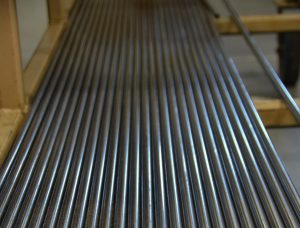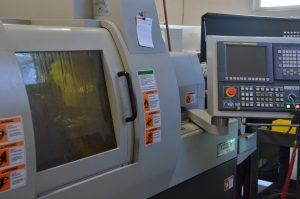There are distinct advantages and applications of CNC Turning and Swiss Machining. But the processes of the two are quite different. Choosing the precision machining process between the two depends on the specific job. Let us understand the differences between the two with their working process and applications.
CNC Conventional Machining
CNC stands for ‘Computer Numerical Control.’ It simply refers to the control of a machine tool such as mill, lathe, or router by an automated system. CNC machining has a wide range of applications on different plastics and metals.
Applications
CNC conventional turning extends the material from chuck to the overall length of the part. The tools then move into the bar to finish off the manufacturing process. This method is best suited for short and large diameter parts that have tight tolerances. CNC turning is also convenient for large parts that have more difficult materials to work with.
Different processes face the need for unique CNC-like systems. These processes usually involve a pattern of operations and movements. These include:
- Welding
- Ultrasonic welding
- Friction stir welding
- Laser Cutting
- Flame and plasma cutting
- Spinning
- Bending
- Sawing
 Distinguishing Features
Distinguishing Features
- It is ideal for castings, forgings, blocks of steel
- CNC turning allows higher production and special fixturing that minimizes the time and efforts.
- The operation is smooth and precise. The machine programming picks the tool for operation and then puts it back. It picks another, and the process repeats.
CNC Swiss Machining
CNC Swiss machining feeds the stock through a guide bushing. The machine feeds the energy out of the spindle and past the tool as it goes. This allows the turning tool to cut the stock near the bushing. This way, the cutting, and bushing are always near the point of support regardless of how long the workpiece is.
Applications
One of the biggest advantages is that the material is always supported close to the cutting tools. The process uses a guide bushing through which the bar stock pushes into the tool. This prevents the deflection of the stock when using a CNC process.
CNC Swiss machining is highly effective for long and slender turning parts. The precision of CNC Swiss provides a cost-effective way for a variety of medical products. Surgical tools, dust cover pins, and firing pins are some of the common products of Swiss machining. The long slender components of these products have a tolerance band of 0.0005 inches per diameter.
CNC Swiss machining is particularly useful in making a variety of components for electronics, and medical industries (among others) with tight tolerances. Other than connectors, it is widely used in making watch parts, shafts, and many other small components.
Distinguishing Features
- Swiss machining deals with complex parts and complex designs.
- It can produce small runs from 100 pieces to high volume productions.
- The processes include turning, milling, drilling, knurling, bring, and several others.
- It is ideal for long parts and diameter parts under 0.0125 inches.


